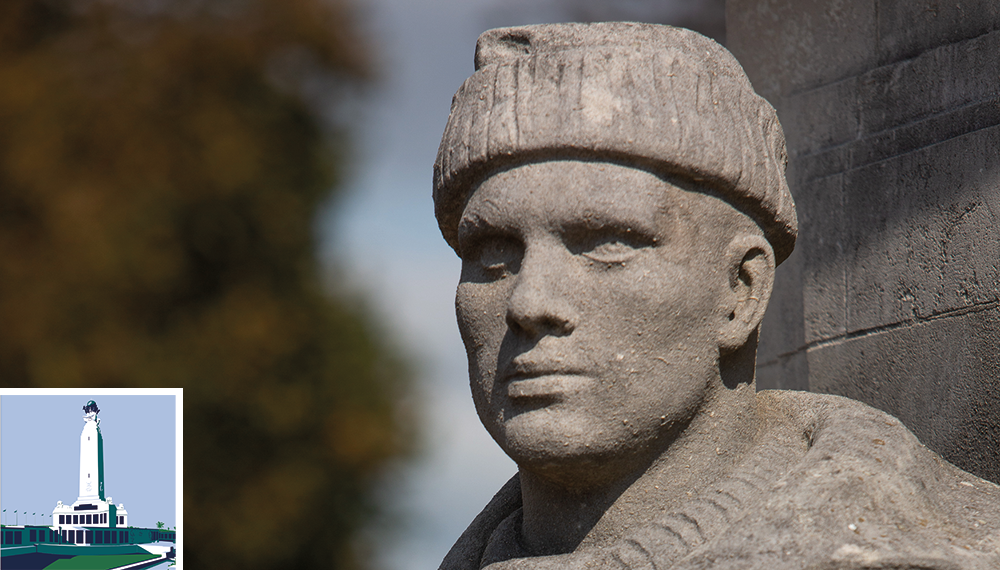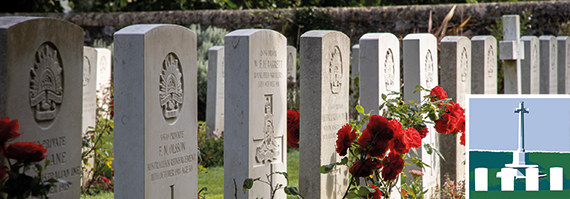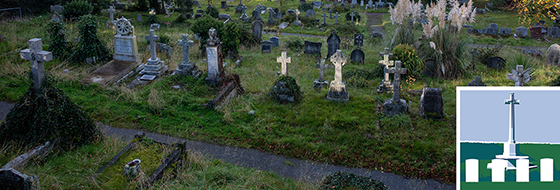Explore our South West Region
The South West region includes war cemeteries and memorials in Cornwall, Devon, Dorset, Somerset and Wiltshire.
In this region the CWGC commemorates more than 38,000 service personnel at over 1,400 locations.

Meet the Team

Hello, I’m Rebecca and I am the Public Engagement Coordinator for the South West Region.
Getting out and about and meeting with people who are passionate about history, their ancestry and the work we do to honour the war casualties from the World Wars makes this job incredibly rewarding. A highlight was meeting a 97-year-old veteran from the Battle of Arnhem and recording his story – his memory was crystal clear and his recollections extraordinary.
Given the military background of my region, there are many large sites as well as numerous small churchyards where the CWGC commemorates casualties; the largest of which is the Plymouth Naval Memorial with around 23,000 men and women commemorated.
Join the conversation on Facebook
To get in touch with your regional public engagement coordinator, please email public.engagement@cwgc.org

I’m Steve and I am the Regional Manager for the Commissions work across the South West Region.
I joined the Commission in July 2015 after a full career in the British Army, retiring in the rank of Captain. My teams work at over 2,000 sites, commemorating over 44,000 casualties. The Plymouth Naval Memorial accounts for more than 23,000 of the casualties commemorated in my region and is the largest CWGC memorial in the South West Region.
My team reflect the region and are based far and wide. I work out of my home office in Plymouth and most of my colleagues live in the counties in which they work. The sites we look after range from a single war grave up to those with over 1,000 casualties. We have more than 90 formal plots, where headstones are in a row with planted borders, which are maintained by our gardeners and local contractors.
The larger plots, found in places like Plymouth Weston Mill Cemetery, are what most people would certainly recognise as war graves. However, the casualties in plots account for only a small percentage of those we look after, with the remainder being buried in what we refer to as scattered graves, where each grave lies on its own within a civilian cemetery.
The main challenges for the team and I are communicating effectively with our dispersed staff and finding time to get together as a team, the size of the region, and maintaining the same horticultural standards throughout with so many different contractors. And finally, the ever-increasing amount of church closures and closed local authority sites that do not get maintained regularly.
To get in touch with the regional operations team, please:

Hi, I’m Richard and I’m the Regional Operations Coordinator for the South West Region.
I started as a CWGC gardener in 2012, based in the east region, before being promoted to my current role. To do this job I have to have an in-depth knowledge of all aspects of horticulture and our operational work. It’s vital but challenging to keeping our high standards consistent across so many different locations.
My main roles consists of planning, monitoring and delivering all of the operational work within the region and to lead our team under the direction of Steve, our Regional Manager, to ensure all aspects of work are completed to the Commission’s standards, ensuring our war dead are commemorated properly and fittingly.
To get in touch with the regional operations team, please:


During both world wars Plymouth was a major Royal Navy base of operations and Efford Cemetery was used as a burial ground. Today you can find over 450 servicemen and women at rest here.
Plymouth (Efford) Cemetery
During the First World War the Sutton Veny area housed several large military camps. The churchyard was used for the burial of 168 service personal, the majority of whom served with Australian Forces.
Sutton Veny (St. John) Churchyard
Amongst more than 70,000 civilian burials in Exeter Higher Cemetery, you will find over 400 service burials dating from the First and Second World War.
Exeter Higher Cemetery
During both World Wars Falmouth became an important Naval base. Falmouth Cemetery is the final resting place of almost 180 service personnel who died during the World Wars.
Falmouth Cemetery
